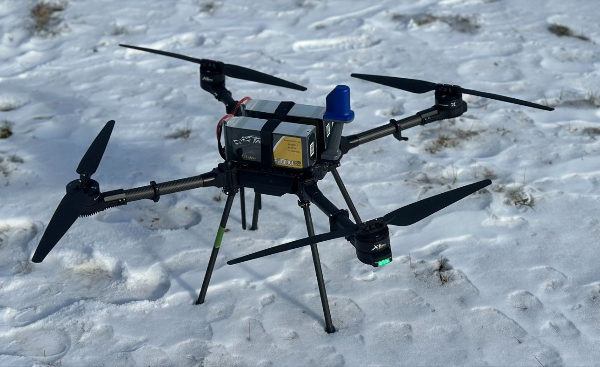Quadcopter vs Multirotor vs Hexacopter vs Octocopter: What's the Difference?
Quadcopter vs Multirotor vs Hexacopter vs Octocopter: What's the Difference?
When it comes to unmanned aerial vehicles (UAVs), there are various types, each with its own set of capabilities and use cases. Quadcopters, multirotors, hexacopters, and octocopters are among the most common types of UAVs, each differing in their design, capabilities, and performance. Let's delve into what sets these aerial vehicles apart and how they are used.
What Is a Multirotor Used for?
A multirotor is a general term used to describe UAVs with multiple rotors, typically more than four. Multirotors can have four, six, eight, or even more rotors, depending on their design and intended use. They are used for similar purposes as quadcopters, but their additional rotors can provide increased stability, payload capacity, and flight time.
What Is a Quadcopter Used for?
A quadcopter is a type of UAV that is powered by four rotors. It is one of the most popular types of drones due to its simplicity, stability, and maneuverability. Quadcopters are widely used for aerial photography, videography, surveillance, and recreational purposes. They are also used in various industries, including agriculture, construction, and search and rescue operations.

What Is a Hexacopter Drone?
A hexacopter is a type of UAV that is powered by six rotors. Hexacopters are known for their increased stability and payload capacity compared to quadcopters and are often used for professional aerial photography, videography, mapping, and surveying. They are also used in agriculture for crop monitoring and spraying.

What Is an Octocopter Drone?
An octocopter is a type of UAV that is powered by eight rotors. Octocopters are capable of carrying heavier payloads and are often used in professional filmmaking, industrial inspections, and search and rescue missions. They provide a high level of stability and redundancy, making them suitable for demanding applications.

Difference Between Quadcopter, Multirotor, Hexacopter, and Octocopter
The main difference between these types of UAVs lies in their number of rotors, which affects their stability, payload capacity, and flight characteristics. Quadcopters, multirotors, hexacopters, and octocopters are all types of drones distinguished by their number of rotors. Quadcopters have four rotors, multirotors have more than four, hexacopters have six, and octocopters have eight.
●Structurally, the main difference is the number of arms and motors, which directly affects stability, payload capacity, and flight time. Quadcopters are simpler and lighter, making them agile but with limited lifting capacity and shorter flight times. Multirotors offer more stability and lifting power but may be less agile. Hexacopters and octocopters provide even greater stability, lifting power, and redundancy, with the ability to continue flying even if one or two motors fail.
●In terms of characteristics, as the number of rotors increases, so does the drone's stability, payload capacity, and cost. However, complexity also increases, requiring more maintenance and potentially higher skill levels to operate.
●Applications vary based on these characteristics. Quadcopters are popular for aerial photography, videography, and recreational flying due to their agility. Multirotors are used for similar purposes but can carry heavier cameras or equipment. Hexacopters and octocopters are favored for professional filmmaking, industrial inspections, and other tasks requiring stability, precision, and heavy payloads.
Overall, the choice of drone depends on the specific application, balancing factors like agility, stability, payload capacity, and cost.
Conclusion
In conclusion, quadcopters, multirotors, hexacopters, and octocopters are all types of UAVs with their own unique characteristics and uses. The choice of which type to use depends on the specific requirements of the application, with each offering its own set of advantages and disadvantages. As a global leader in lithium battery cell manufacturing, Grepow offers professional customization drone battery solutions for quadcopters, multirotors, hexacopters, and octocopters drones, catering to your specific application requirements. If you have any questions or needs, please feel free to contact us at info@grepow.com.
Related Articles:
Racing FPV Drone vs Freestyle FPV Drone vs Filming FPV Drone
What Is a Long Range FPV Drone?
What Size FPV Drone Should I Get?
Related Articles
-

Powering Aerial Artistry: Grepow Battery Solutions Behind Drone Light Shows
2025-10-27 -

Vatican Drone Show: Where Technology Meets Faith
2025-09-15 -

Why Do We Need Silent Drones?
2025-09-02
Related products
-

Tattu 4.0 18S Lipo 30Ah 68.4V Smart UAV Drone Battery
-

Tattu 23000mAh 6S 22.8V 25C LiHv Pouch Cell UAV Battery
-

Tattu Plus 6S 10000mAh 22.2V 25C Lipo Smart Drone Battery
-

Tattu Pro 14S Lipo 22000mAh 51.8V Smart UAV Drone Battery Pack
-

Tattu Plus 1.0 Compact 12S 16000mAh 44.4V 15C Lipo Smart Drone Battery
















































